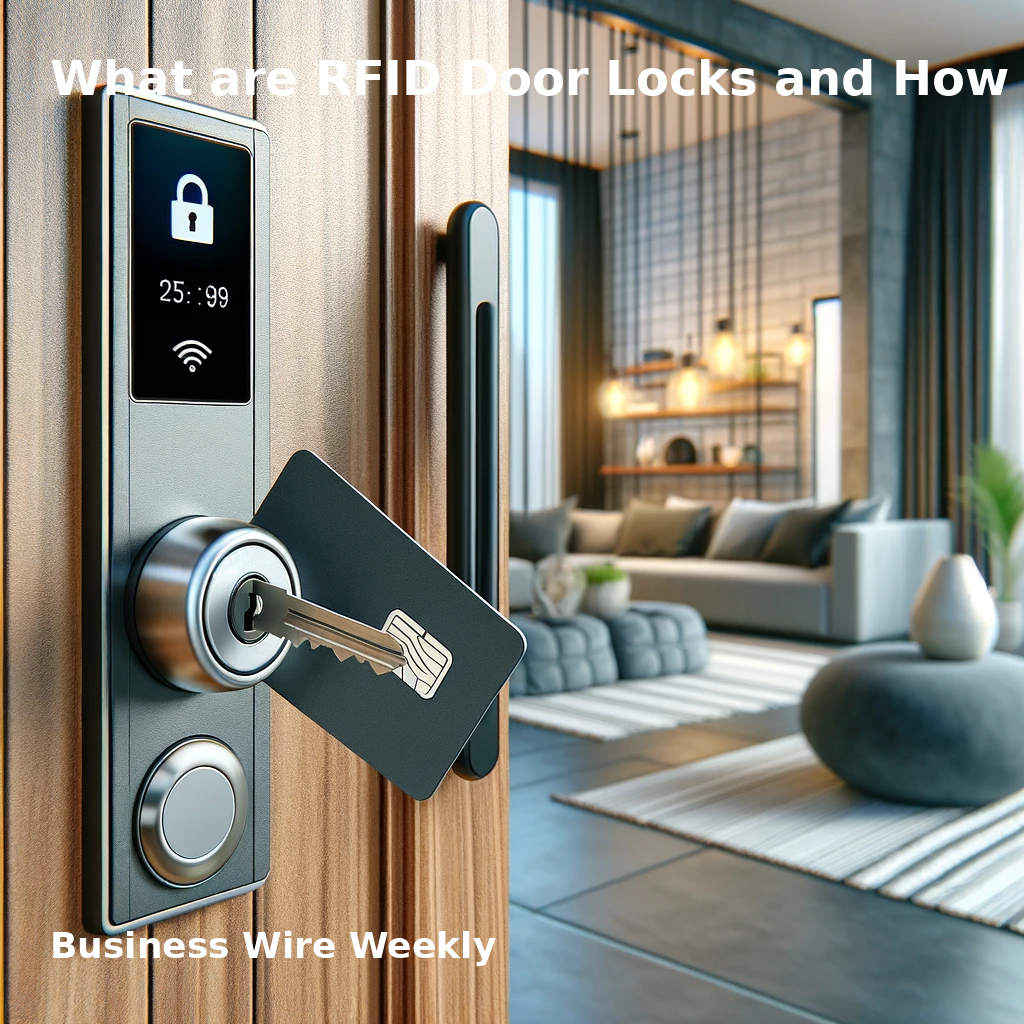RFID door locks are becoming popular for homes and businesses. They are secure, easy to use, and convenient. This article will explain what RFID door locks are, how they work, and why they are a good choice for security.
What are RFID Door Locks?
RFID stands for Radio Frequency Identification. RFID door locks use radio waves to read information stored on a key card or fob. When you bring the key card or fob near the lock, it sends a signal to unlock the door.
Types of RFID Door Locks
There are different types of RFID door locks. Some use key cards, while others use key fobs or even smartphone apps. Here are the main types:
- Key Card Locks: These use a plastic card with an embedded RFID chip. You swipe or tap the card to unlock the door.
- Key Fob Locks: These use a small device that you carry on your keychain. You tap the fob on the lock to open the door.
- Smartphone Locks: These use an app on your phone. You hold your phone near the lock, and it reads the RFID signal to unlock the door.
How Do RFID Door Locks Work?
RFID door locks work using radio waves. Here’s a simple breakdown of the process:
- The RFID Tag: The key card or fob contains an RFID tag. This tag has a small chip that stores information and an antenna to send and receive signals.
- The Reader: The lock has an RFID reader. When you bring the tag close to the reader, it sends out a radio signal.
- Communication: The RFID tag picks up the signal and sends back the stored information.
- Verification: The lock verifies the information. If it matches the stored data, the lock opens.
Components of RFID Door Locks
RFID door locks have several components that work together:
- RFID Tags: These are embedded in key cards or fobs.
- RFID Reader: This is installed in the lock.
- Antenna: Both the tag and reader have antennas to communicate.
- Control Panel: This processes the information and controls the locking mechanism.
Why Choose RFID Door Locks?
RFID door locks offer many benefits. Here are some reasons why they are a good choice:
Security
RFID door locks are very secure. The information on the RFID tag is unique and hard to duplicate. This makes it difficult for someone to make a copy of your key.
Convenience
RFID door locks are easy to use. You don’t have to fumble with keys. Just tap your card or fob, and the door unlocks. This is especially helpful when your hands are full.
Access Control
With RFID door locks, you can control who has access to your property. You can easily add or remove access for different people. This is useful for businesses or shared living spaces.
Durability
RFID door locks are durable and can withstand harsh weather conditions. The electronic components are sealed, so they are not affected by dust or moisture.
Flexibility
RFID door locks can be used in various settings. They are suitable for homes, offices, hotels, and more. You can also integrate them with other security systems.
How to Install RFID Door Locks
Installing RFID door locks is a straightforward process. Here are the steps involved:
Choose the Right Lock
First, choose the right type of RFID door lock for your needs. Consider the level of security, ease of use, and compatibility with your door.You can also read New Zealand Rental Laws for Pets: What You Need to Know.
Gather Tools and Materials
You will need some basic tools and materials to install the lock. These include a screwdriver, drill, measuring tape, and the lock kit.
Remove the Old Lock
Remove the existing lock from your door. Follow the manufacturer’s instructions to take out the screws and detach the lock.
Install the New Lock
Install the RFID lock according to the instructions. This usually involves attaching the reader to the door and connecting the control panel.
Test the Lock
Once installed, test the RFID door lock to ensure it works properly. Try using the key card or fob to open the door and make sure it locks securely.
Maintenance Tips for RFID Door Locks
To keep your RFID door lock working well, follow these maintenance tips:
Regular Cleaning
Clean the lock and reader regularly to remove dust and dirt. Use a soft cloth and avoid harsh chemicals.
Check Batteries
If your RFID door lock uses batteries, check them regularly. Replace the batteries when needed to ensure the lock functions properly.
Update Software
Some RFID door locks have software that needs to be updated. Check for updates and install them to keep your lock secure.
Inspect for Damage
Regularly inspect the lock for any signs of damage. If you notice any issues, contact a professional for repair.
Common Issues with RFID Door Locks
While RFID door locks are reliable, you might encounter some issues. Here are common problems and how to fix them:
Key Card or Fob Not Working
If your key card or fob doesn’t work, check if it is damaged or needs to be replaced. Also, make sure it is within range of the reader.
Lock Not Responding
If the lock doesn’t respond, check the power source. Make sure the batteries are not dead or the lock is properly connected to power.
Interference
RFID door locks can be affected by interference from other electronic devices. Keep the area around the lock clear of other devices to avoid issues.
Software Glitches
Sometimes, software glitches can cause problems. Restart the lock or update the software to fix these issues.
Conclusion
RFID door locks are a great option for enhancing security and convenience. They use advanced technology to provide a secure and easy-to-use locking system. Whether for home or business, RFID door locks offer a reliable solution for access control.
By understanding what RFID door locks are and how they work, you can make an informed decision about using them for your security needs. With proper installation and maintenance, RFID door locks can provide long-lasting protection and peace of mind.



